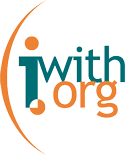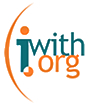This is the final installment of a three-part series detailing lessons learned from the world of software development that can be applied to the social change work. Previously, we talked about identifying obstacles to action and using data to inspect and adapt. Today we’re talking about the importance of making small improvements along the way.

It often takes a series of smaller ideas to get to the big one you love. (Photo via ratch on Shutterstock.)
Have you ever been really excited about a new project, but you’re not sure how to start? Some people prefer to plan as much as possible from the very beginning, while others just want to dip their toes in with a small step. These two approaches are common in the software development world. The first approach is called “waterfall,” and the second is known as “iterative.”
Iterative development is at the heart of Agile software development strategies. Iterative methods assume that in a complex project, there will be too many variables (sometimes called “risks”) to account for up front.
Instead, the goal is to identify the smallest possible increment that will prove or disprove a hypothesis. And we build only that part!
Of course, we might have other ideas in mind, but we focus on building a small piece and then we collect feedback from people, see how it’s actually being used (which is sometimes different from how we expected), and figure out the best way to move forward.
Iterating in the social good space
Linda Kay Klein leads the Work on Purpose program at Echoing Green, a social impact accelerator which has awarded $31 million dollars in start-up funding to over 500 promising social entrepreneurs in 40 countries since its founding in 1987.
Work on Purpose is a perfect example of iterative program development. Linda says she was originally brought on to promote a book by the organization’s senior vice president, which illustrated one principle for finding your purpose through the stories of five of Echoing Green’s social entrepreneurship Fellows. She says at that time, Echoing Green had a hunch that it could become more than a book, but they weren’t sure where it would lead. It was unclear how her job would take shape, but both Linda and the organization were willing to take a risk.
Over the next two and a half years, Work on Purpose evolved under Linda’s leadership. Echoing Green’s staff identified nine more principles for finding your purpose, each of which are now illustrated via stories and taught through interactive activities. The stories and activities became a series of workshops, then an online learning platform, and eventually a curriculum on which faculty and staff of over 50 colleges, universities and nonprofits have been trained. Linda and her colleagues evaluated each piece of the program at every step along the way via surveys, focus groups, and one-on-one meetings. They even refined their evaluation methods as they went, drawing upon research in the fields of education, psychology, and organizational behavior to develop proxy measures that would enhance their evaluative methodologies. She credits this formative evaluation process for the fast growth of Work on Purpose from a book into a successful program.
Linda believes Echoing Green’s “evaluate early and often” technique is relatively common in the social entrepreneurship. Entrepreneurs have a long history of evaluating buyers’ responses to products and changing them up as needed; social entrepreneurs do the same thing with social programs and products.
“Our Echoing Green social entrepreneurship Fellows are all in start-up phase,” Linda adds. “They haven’t had a long enough history for longitudinal research, so—like the Work on Purpose program did—they evaluate and make changes in real time. That’s what being scrappy is all about.” She says that traditional nonprofits haven’t always done this, instead evaluating programs at the end of a long pilot phase, perhaps missing opportunities to make adjustments along the way.
Evaluate early, evaluate often
Here are some things to keep in mind for an iterative approach to program development:
-
Identify your MVP (Minimum Viable Product). This might not be applicable to every social good project, but it’s probably applicable to more than we realize. Your minimum viable product is the smallest deliverable possible that will prove or disprove a hypothesis. This means getting something in front of real people as soon as possible, like Echoing Green’s first round of workshops, and collecting feedback before iterating further. Be careful not to confuse this with “the least amount of work we can do.” It’s not small for the sake of small; it’s the minimum needed to isolate variables and learn as much as possible.
-
Evaluate against problem statements, not solutions. In software development, it’s tempting to evaluate success based on simple metrics like traffic and feature use. But every feature is attempting to solve a problem, and if people are using the feature but the problem isn’t solved, the feature has failed. Similarly, in the world of social good, projects must be evaluated on their impact, not their use. Echoing Green set goals not only about the number of schools who would adopt their curriculum, but also the impact the curriculum would have on participants.
-
Use proxy measures. Linda credits the TCC Group with helping to shape the way Echoing Green approached evaluation for its Work on Purpose program, specifically helping them identify trustworthy measures that would allow them to project longer-term effects than they were actually able to assess. As an example, research shows that people who feel more related to one another are more likely to work on one anothers’ behalf. With this research as a proxy measure, the Work on Purpose program can now assess participant’s long-term likelihood to work on behalf of others simply by measuring whether or not they felt more related to others after a workshop.
How have you used an “evaluate early and often” approach to iterate on your programs?
-
For another example of iteration in action, check out our post about Farmigo, a company that’s bringing the farmers market to you.













